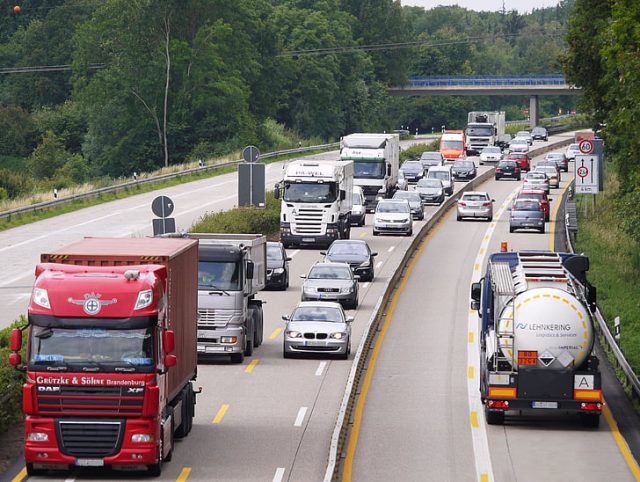
The used car market in Romania has set a new record this year. Unlike in 2017, when the second-hand car market exploded in Romania with the abolition of the environmental tax, this year the same sector saw a substantial decrease. The main reason seems to be the significant increase in the price of these second-hand cars amid the financial and semiconductor crisis. According to analysts, the higher price of used cars came amid growing demand compared to supply. And the supply is falling for both new and used cars.
Second-hand car prices up 17%
The average price of used cars reached a record high in the middle of this year, according to an analysis by an online platform. In the period analysed – May to June – it stood at €12,800, 17% higher than in the same period last year. At the same time, according to the same analysis, of the total volume of cars traded and registered, two thirds (60%) belonged to the used car segment, which is down from 73% in the same period last year. The downward trend is confirmed by the comparative figures available for 2022 and 2021. Thus, the average price of such a car increased by 46% from the end of 2020 to the end of 2022. At the same time, last year, the used car market in Romania saw a decrease of 18% compared to 2021.
Also, 2022 was the year with the lowest number of imported used cars registered in the country in the last 6 years. The main reasons were said to be a lack of stocks and higher prices. Added to the lower number of used cars put up for sale and high inflation was the reduced supply of new cars in stock and increasing waiting times for delivery.
Germany: used car prices 10% higher
In other words, some of the customers who would have liked a new car have turned to the second-hand market, putting pressure on prices. With the financial crisis fueled by inflation, more and more Romanians are finding it harder to part with their used cars. But representatives of the website that conducted the recent analysis, the Instant.ro platform, say they expect price corrections in the coming period, as the problems that have caused shortages in the car industry – the so-called semiconductor crisis of the past two years – are resolved. The situation is similar in the major European car markets. Data from the Autovista group, which analyses the market for cars up to three years old, shows that prices have risen sharply over the past year. The advance ranges from 9.6% in Spain to almost 28% in Italy. In Germany, Europe’s biggest car market, prices for used cars are up 10% on a year ago.
According to recent estimates by specialists, who took into account 645,000 used cars produced between 2010 and 2023 and listed for sale in the last five years, Romanians change cars most frequently between 150,000 and 200,000 kilometers driven. In addition, more and more Romanian drivers opting to buy a used car are turning to SUVs (Sport Utility Vehicles). In the used segment, the Dacia Duster is selling better compared to the Dacia Logan, while Hyundai’s SUV models (Tucson and Santa Fe) and Toyota’s RAV 4 have caught up with sedans sold by the same brands, such as the i20, i30, Avensis and Corolla respectively.
“When buying a used car, Romanians focus on car safety, technology, reliability and brand prestige. And in the context of volatile fuel prices, urban consumption is becoming an increasingly important factor,” the analysis states.
Premium brands such as BMW, Mercedes-Benz and Audi remain among Romanians’ favorites. Volkswagen, Renault, Ford, and Skoda are also in the ranking. Compared to previous years, drivers are more interested in petrol engines than diesel, the study also reveals.
Europe lacks sufficient semiconductor manufacturing capacity
The semiconductor crisis is an issue that emerged during the COVID-19 pandemic and continues to affect the global economy and technology industry this year. Over the past year, demand for electronics and technology equipment has increased while supply has remained flat or even declined due to supply chain disruptions caused by the pandemic. Chip shortages have affected sectors ranging from automobiles to consumer electronics and even the military. A notable example is the automotive sector, where car production has been affected by chip shortages, leading to falling stocks and rising prices. The semiconductor crisis has highlighted the world’s dependence on manufacturers in Asia, particularly Taiwan, South Korea, and China, which are responsible for most of the world’s chip production. This dependence has led to a series of government protection policies and risk mitigation initiatives, including initiatives to increase domestic chip production in places like the US and Europe.
At European Union level, a plan to tackle this crisis emerged earlier this year. But industry representatives warn that the danger is not over, especially for Europe, which has insufficient semiconductor production capacity. Joachim Kahmann, responsible for purchasing and contact with semiconductor suppliers within the Stellantis group, believes that the problems will become more serious as new cars need more and more parts using semiconductors. A modern machine has somewhere between 1500 and 3000 semiconductors.

This crisis has not bypassed Romanian car manufacturers Dacia and Ford. It was only this year that the situation began to improve for them, after their factories had serious problems supplying these chips last year. Despite these difficulties, the market for new cars in Romania has grown at the expense of the used car market this year. Growth in the first months of the year was 25%, with Dacia models in the top five. BMW and Suzuki were the brands with the biggest percentage advance. The advance in sales of new models, especially electric ones, also comes as the European Commission last year announced proposals for new pollution standards for cars, known as Euro 7, which would come into force from 2025. Under the European Commission’s proposals, from 2035 the sale of cars with diesel and petrol engines would be banned, with an interim period for switching to electric cars. This restriction on the sale of cars with internal combustion engines from the European Commission sparked a lot of controversy from the major car manufacturers and Brussels subsequently gave in to Germany.
What kind of cars will be sold after 2035?
Germany succeeded in early March in blocking at the last minute the regulation that would have reduced CO2 emissions from new cars to zero. The regulation as mentioned earlier required that from 2025 only electric cars would be sold. Germany has asked the Commission to come forward with a proposal to pave the way for vehicles running on synthetic fuels. This technology is promoted in particular by German and Italian car manufacturers and would allow the continued use of internal combustion engines beyond 2035. Synthetic fuel is a liquid fuel obtained from syngas, a mixture of carbon monoxide and hydrogen, in which the syngas was derived from gasification of solid feedstocks such as coal or biomass or by reforming of natural gas. Synthetic fuels, which do not currently exist, will not play a major role in the automotive segment in the medium term. Moreover, synthetic fuel technology is vehemently contested by environmental NGOs, which see it as costly, energy-intensive and polluting. Electrofuels, also known as e-fuels or synthetic fuels, are a type of drop-in replacement fuel. They are manufactured using captured carbon dioxide or carbon monoxide, together with hydrogen obtained from sustainable electricity sources such as wind, solar and nuclear power. Electrofuels, also known as e-fuels or synthetic fuels, are a type of drop-in replacement fuel. They are manufactured using captured carbon dioxide or carbon monoxide, together with hydrogen obtained from sustainable electricity sources such as wind, solar and nuclear power. The process uses carbon dioxide in manufacturing and releases around the same amount of carbon dioxide into the air when the fuel is burned, for an overall low carbon footprint. Electrofuels are thus an option for reducing greenhouse gas emissions from transport, particularly for long-distance freight, marine, and air transport.



 Subscribe
Subscribe